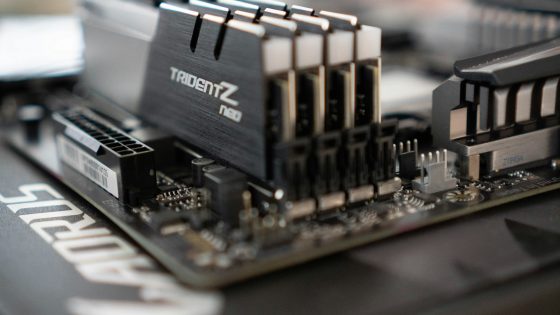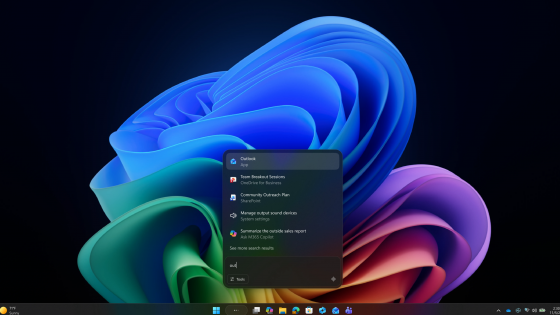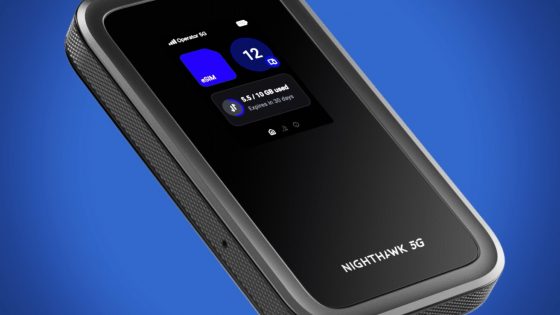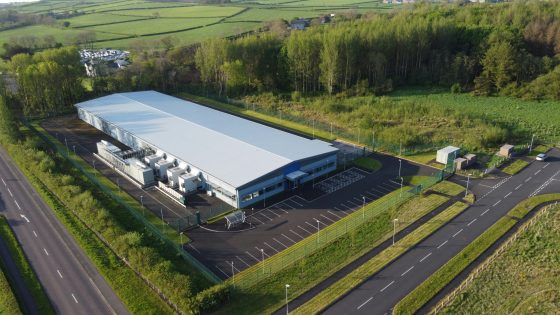Samsung 9100 Pro 8 TB test – "infinite" space and crazy speed
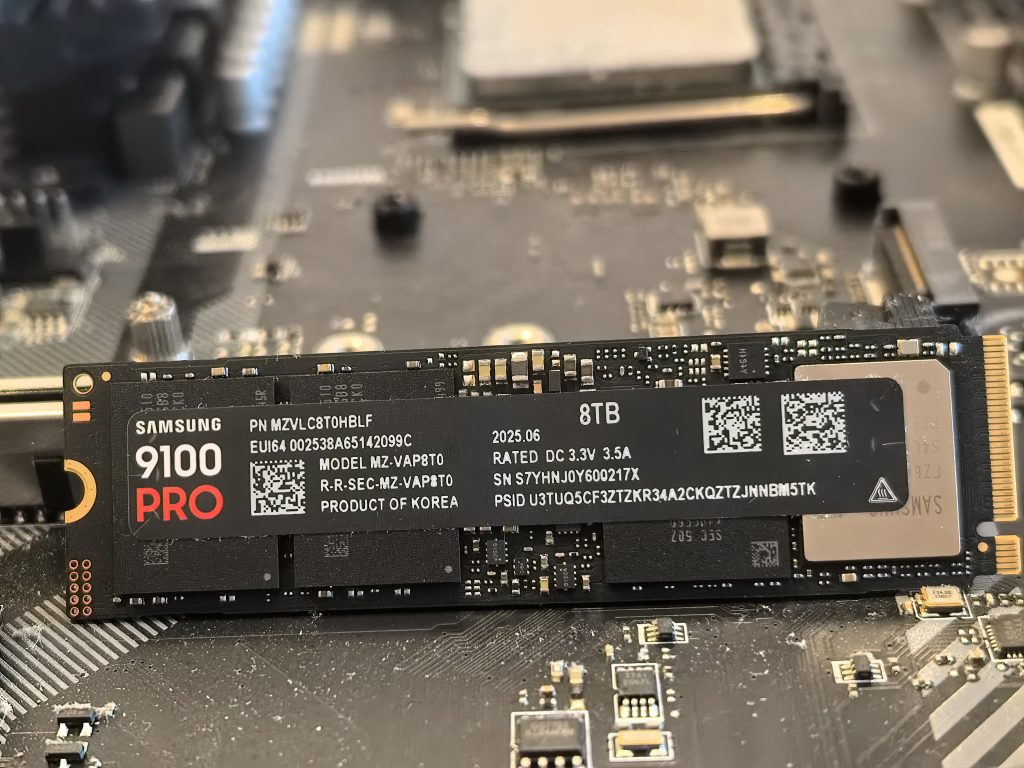
When I test different devices, especially computers on which I have to test a bunch of games and programs, I run out of space very quickly. Right now I'm testing a handheld computer (unfortunately I can't reveal its name yet) with a 1-TB drive, which I filled in a few hours and didn't even go overboard with the games I wanted to test. I have 3 TB on my PC, which is also getting close to full. If I didn't have a separate server for Jellyfin (movies, series), I would have grumbled a long time ago and looked for additional solutions to upgrade the capacity (I was thinking about a PCIe expansion card, a cheap and high-quality solution).
Then you get your hands on a giant like Samsung's new SSD 9100 Pro. It's not actually new, as I've already tested the 4-TB version, but what's new is this crazy capacity. It's clear that at this point many people won't need such a drive, but the demands of ordinary consumers are increasing, not to mention companies, where data growth is even faster. Just a couple of years ago we were buying 512 GB for computers, today 2 TB is almost not enough for even a slightly more data-oriented user.
Let's leave that for another time, it's time to test the Samsung 9100 Pro 8 TB.
Samsung 9100 Pro 8 TB price and specifications
- Samsung 9100 Pro 8TB: around €1000
I found it at our retailers for €1,100, and in Austria and Germany for €900.
| Shape | M.2 2280, double-sided module |
| Interface | PCIe 5.0 x4, NVMe 2.0 |
| Capacities | 1TB, 2TB, 4TB, 8TB |
| Flash memory type | Samsung 8th generation V-NAND TLC (236 layer 3D) |
| Controller | Samsung Presto (5nm, internal design) |
| DRAM cache | 8 GB LPDDR4X (1 GB per 1 TB capacity) |
| Sequential speed (read) | to 14,800 MB/s |
| Sequential speed (write) | to 13,400 MB/s |
| Random IOPS (read) | up to 2,200,000 IOPS (4KB) |
| Random IOPS (write) | up to 2,600,000 IOPS (4KB) |
| Endurance | 4,800 TB total writes (TBW) |
| Reliability | MTBF 1.5 million hours, ECC data protection |
| Warranty | 5 year limited warranty |
| Machine functions | TRIM, SMART |
As we can see, the numbers are impressive. Sequential speeds reach 14.8 GB/s for reading and 13.4 GB/s for writing, which is almost twice as fast as the previous generation of Samsung PCIe 4.0 SSDs (the 990 Pro reached 7 GB/s). These are official values measured under optimal conditions, and the drive is therefore among the fastest PCIe 5.0 SSDs on the market. Even when accessing 4K files randomly, the performance is top-notch, up to 2.2 million IOPS for reading and 2.6 million IOPS for writing, of course at high queue depths (QD32). These numbers indicate that the controller is capable of simultaneously managing a huge number of operations and making maximum use of the interface bandwidth.
The drive uses 236-layer 3D TLC NAND flash memory, which is Samsung's latest generation of V-NAND (so-called 8th generation). This memory promises high storage density and solid endurance. Although it is TLC (triple-level cell) with 3 bits per cell, Samsung achieves an endurance of 600 TBW per TB of capacity, which means a total of 4,800 TBW for the 8 TB model.
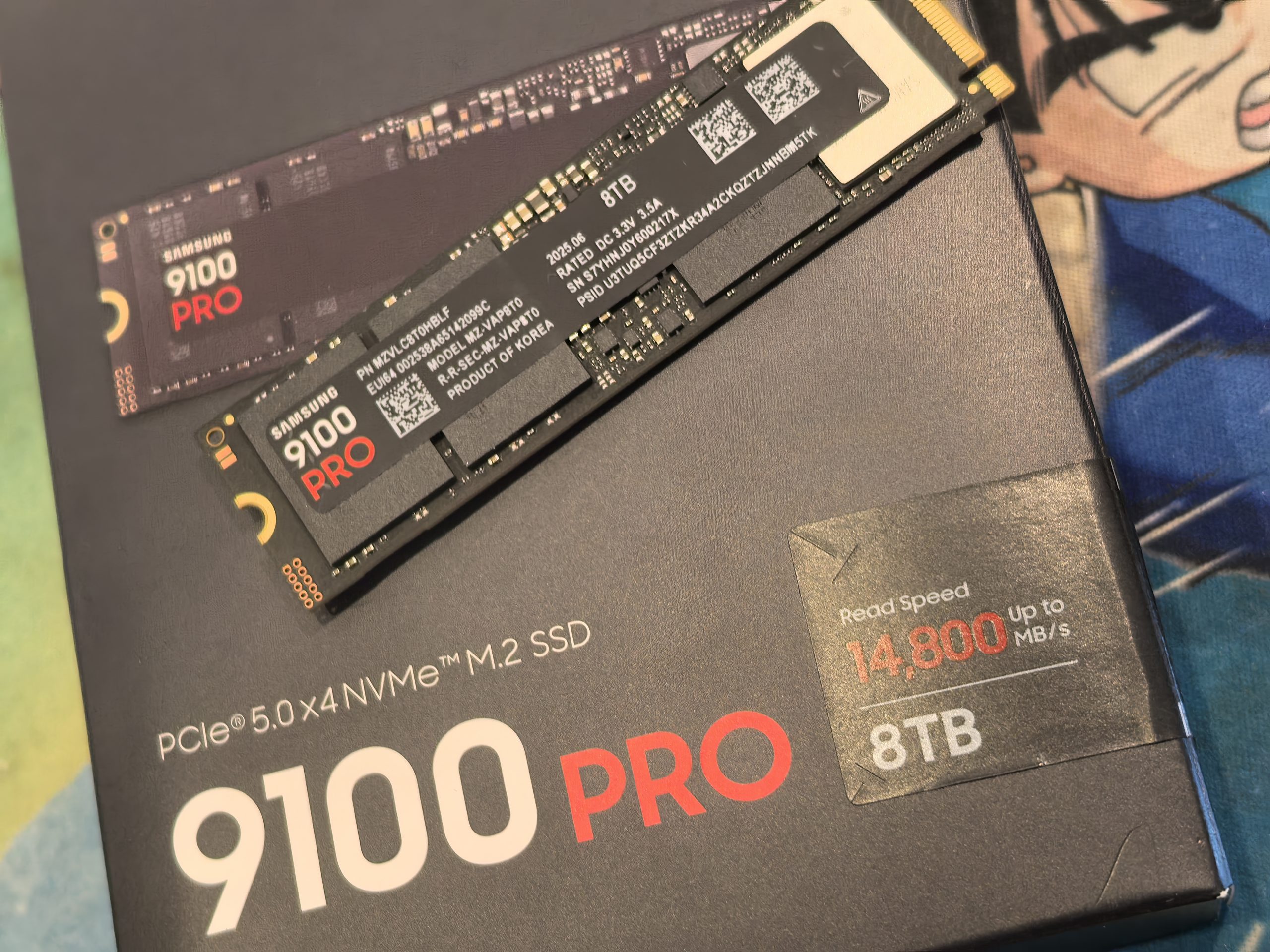
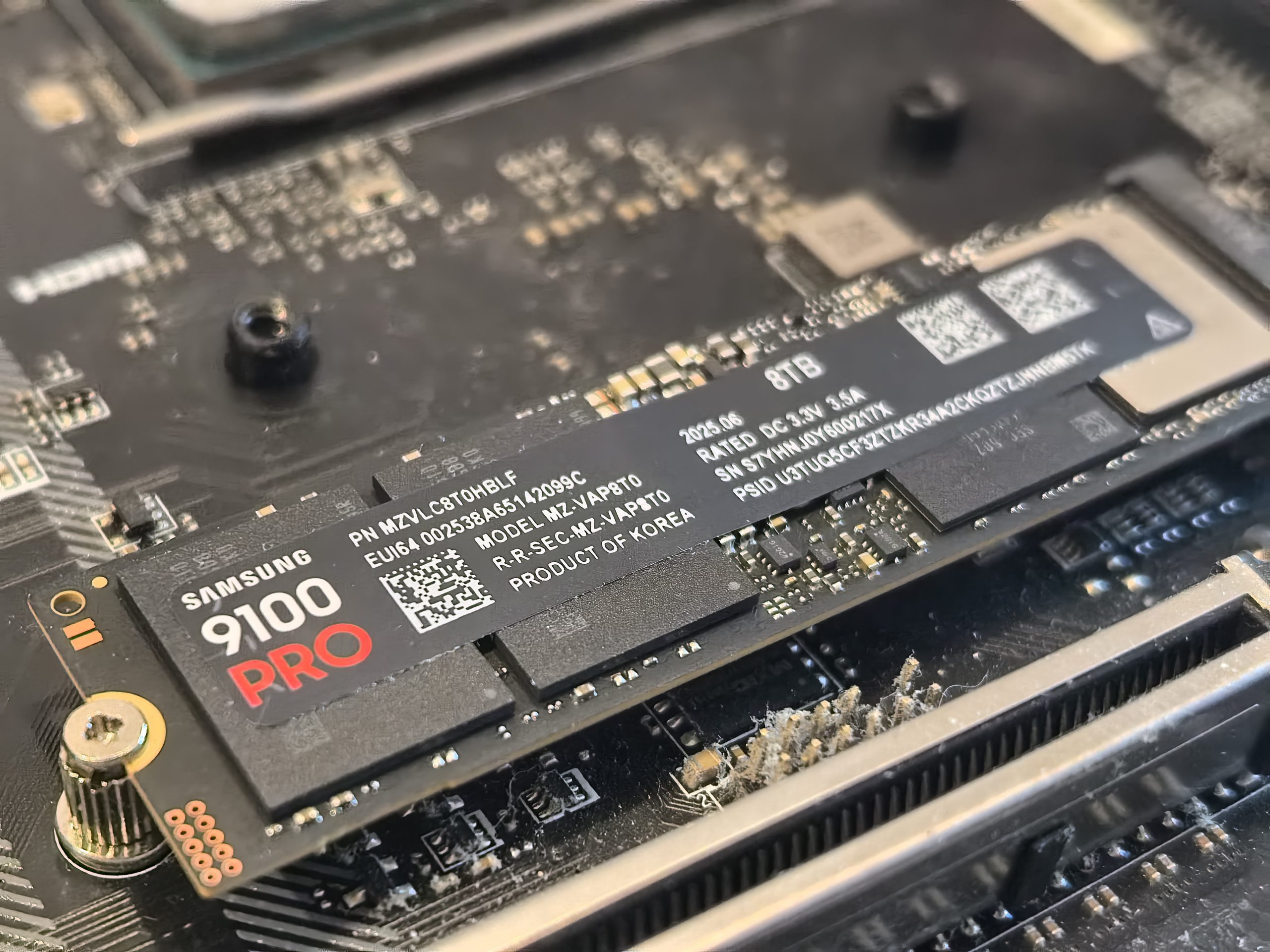
Samsung 9100 Pro 8 TB: How did they approach the design?
As I mentioned in my review of the 4TB version, the 8TB version is double-sided, meaning that the printed circuit boards are populated on both sides. There's simply no other way to go if you want that kind of capacity (at least not at this point).
On the front, we find Samsung's own controller, internally codenamed Presto, and 2 packages of 3D V-NAND memory, along with 8 GB of LPDDR4X cache (DRAM). On the back, there are two additional NAND chips, which together add up to four memory packages, each with a capacity of 2 TB, to provide a total of 8 TB of space. This is Samsung's first bilateral SSD design after almost a decade, which was needed to achieve such high capacity in the M.2 format.
However, the length of the standard 80 mm remained the same, but the thickness was slightly increased (to 3.88 mm). If you plan to install such an SSD in your laptop, you may have problems due to its design and, consequently, overheating. Of course, provided that your laptop supports Gen5 SSDs at all. Be sure to check this, otherwise you will pay almost a thousand for Gen4 speeds. In desktop systems and servers, the design will not be an obstacle.
The drive is available with or without a heatsink. My version came without and will rely on passive cooling and the cooling I already have in my case. If you want to buy a heatsink, it will cost you around €20.
The printed circuit board is high-quality and robust, with a black protective coating. Regarding the connection, it is worth noting that the 9100 Pro uses an M.2 (Key M) connector on the PCIe 5.0 x4 bus. Although U.2/U.3 (2.5-inch) and EDSFF cards, which allow for quick replacement, dominate server environments, this drive is more intended for installation in workstations or server motherboards that support M.2 PCIe 5.0 slots due to its shape. If we want to use the 9100 Pro in a classic server environment, an adapter (for example, a PCIe expansion card for M.2) may be required, since, unlike U.2 SSDs, this drive does not come in a standard drive bay housing.
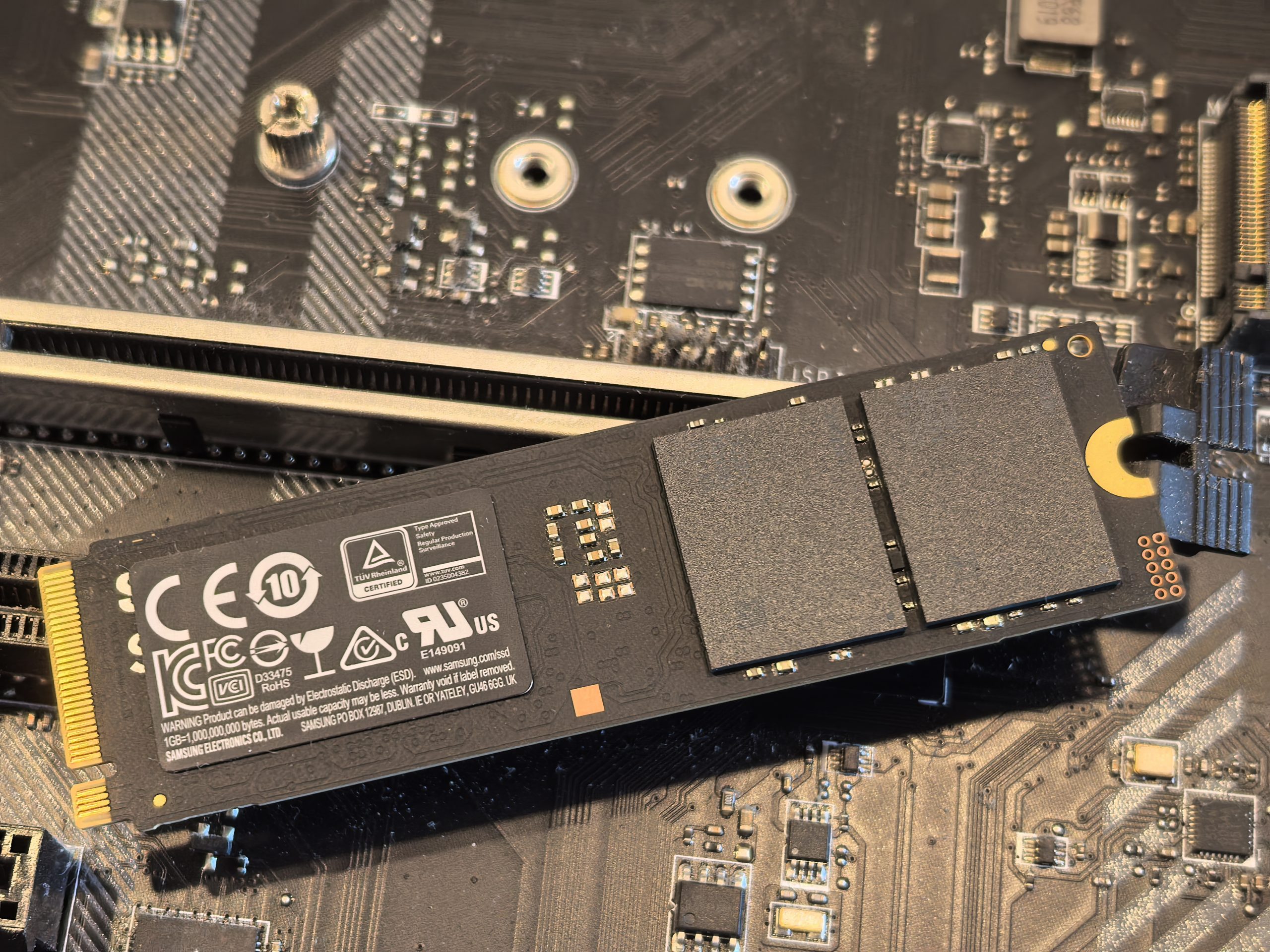
What hidden assets does he use, besides speed?
The Samsung 9100 Pro supports NVMe 2.0 over the PCIe 5.0 x4 bus, taking advantage of newer protocol optimizations (more efficient command management, scalability with ZNS), while remaining backward compatible with older data buses. It will also work in a PCIe 4.0 slot (with correspondingly lower throughput) and understands NVMe commands from version 1.2 onwards, making it easy to integrate into existing systems without replacing the platform.
At the heart of the drive is Samsung's 5nm, 8-channel Presto controller with Intelligent TurboWrite 2.0 dynamic SLC cache, which temporarily converts a portion of the TLC NAND to ultra-fast SLC, significantly accelerating short, intensive writes.
The drive includes all modern features (TRIM, SMART, advanced wear and tear protection systems) and AES-256 hardware encryption (TCG Opal/IEEE 1667). Where does the 9100 Pro differ from enterprise SSDs? It lacks hardware power loss protection (PLP), like most consumer SSDs, and comprehensive end-to-end data protection. In the event of a power failure, any write that was in DRAM or in the process of writing to NAND at that moment may be lost (although there is a very small chance of this). Enterprise SSDs, such as Kioxia, Micron ..., have such protections, so they will continue to be a better choice for data environments. No wonder, the Samsung 9100 Pro 8 TB is primarily focused on consumers looking for high capacities and speeds.
Did the tests prove his alleged dominance?
In CrystalDiskMark, a benchmark for sequential and random transfer performance, the Samsung 9100 Pro achieved almost the declared values for sequential reads. The results were in the range of 13-14 GB/s, while sequential writes were slightly behind the marketing, but still exceeded 11 GB/s. Interestingly, in some tests, the write speed of the 8 TB model slightly lagged behind the 2 TB version of the same drive. There were no such differences in reading. The Samsung 9100 Pro 8 TB reigned supreme in sequential reads and also excelled in random reads with small blocks, where it achieves extremely low access times thanks to Samsung's fast V-NAND with low latency.
ATTO (which increases the block size) showed that the drive reaches peak throughput even at relatively small blocks, with bandwidth reaching its maximum at around 128 KB. This means that there will be no bottlenecks even when transferring medium-sized files. At the smallest block sizes (4K, 8K), the Samsung 9100 Pro trails other high-performance SSDs. Here, the limitations are mainly in IOPS and controller latency.
With 2.2M IOPS read and 1.5-2.0M IOPS write, as far as I can tell under optimal conditions, it ranks right at the top of the consumer SSDs. A synthetic FIO test I ran with QD=1 on random 4K (a latency measurement) showed that the Samsung 9100 Pro was capable of consistent access times of around 80 µs for reads and slightly higher (100 µs) for writes, which is excellent for such a large device.
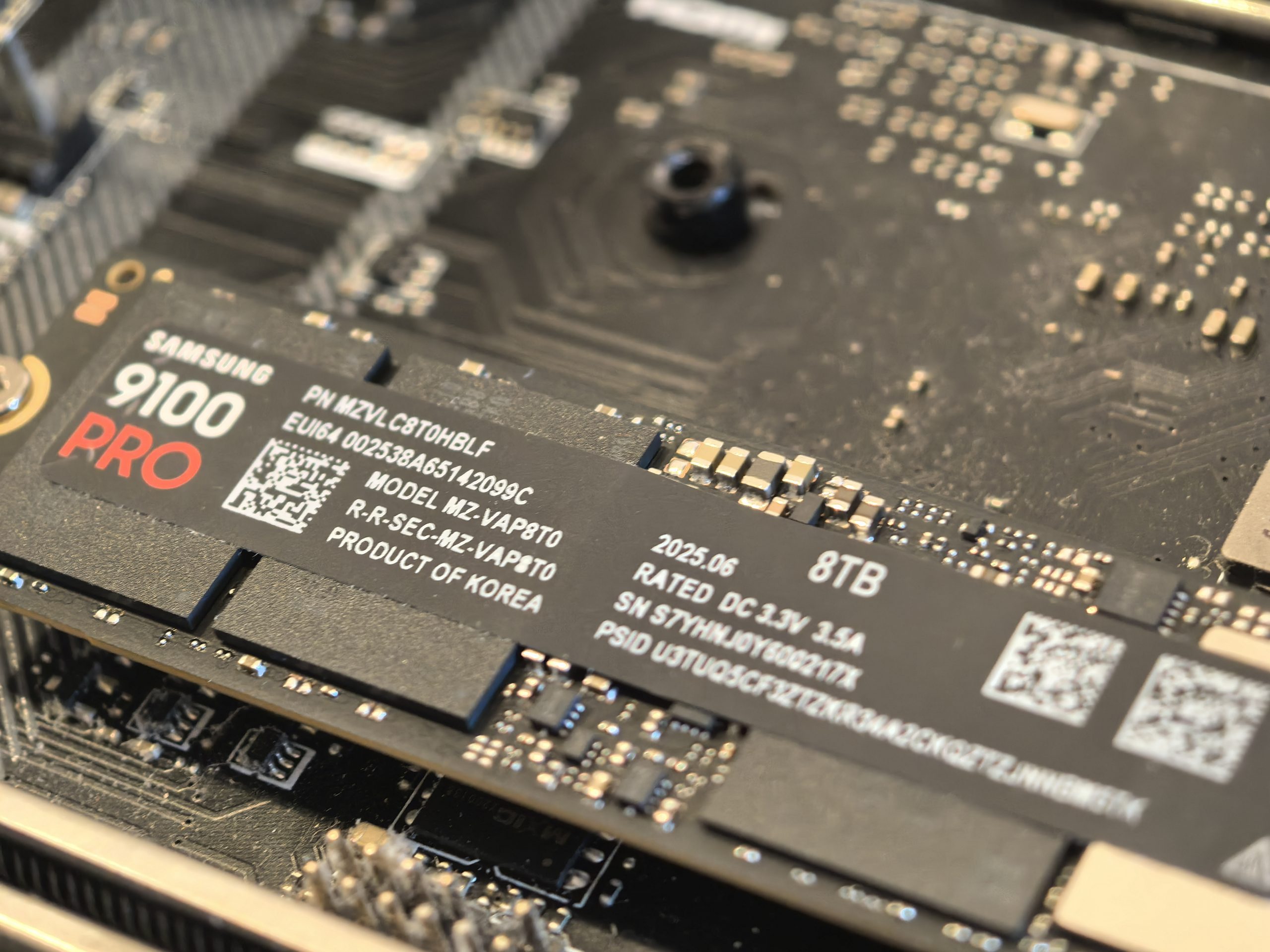
3Dmark Storage and PCMark 10 Storage are tests that simulate more realistic loads (launching games, loading programs, recording videos, etc.). In the 3DMark Storage test, the Samsung 9100 Pro 8 TB achieved an extremely high score (around 20,000 points on average), which is among the highest achieved by SSDs to date.
This means that the drive performs excellently when loading large games, textures, and streaming media. The combination of high speed and huge space means that a user can install their entire game library on this drive, all at Gen5 speeds.
PCMark 10 Storage Advanced, which tests writes and reads in content creation and productivity scenarios, showed a similar picture. The Samsung 9100 Pro easily outpaced PCIe 4.0 drives and ranked alongside the best Gen5 models. However, I did notice some slowdowns in some tests, which is due to the SLC cache filling up. This slowdown is common with such SSDs, as the drive has to constantly flush SLC to the slower TLC mode. Will you notice this? Ask yourself if you often copy huge files, such as transferring large databases. If so, then you may notice this, although the speeds are still fast.
There was no overheating. Otherwise, it heated up to a good 60 °C, which is still at the upper limit. If you use a cooler, I expect the temperature to fluctuate between 50 and 60 °C under load.
- CrystalDiskMark 8 (sequential 1M Q8T1): 13,800 MB/s read, 11,500 MB/s write
- 3DMark Storage Benchmark: 20,400 points
- AS SSD: around 4,800 MB/s
If I'm not splitting hairs, this is a phenomenal SSD. It has fulfilled almost all the promises in terms of speed and can rightfully stand alongside the best.
The Samsung 9100 Pro 8 TB is currently unrivaled
The Samsung 9100 Pro 8 TB is a unique product at the moment, standing out as a pioneer in the market in many ways. It brings the first true 8 TB capacity to the consumer NVMe segment, combined with the speeds of the next generation PCIe 5.0. Yes, the price is quite high, but competitive considering what it offers.
For the average consumer who needs an SSD for the system and a few games, this is definitely there is no a sensible purchase – there are cheaper NVMes out there that will be more than enough. The Samsung 9100 Pro 8TB is a sensible choice for those who really need the combination of extreme speed and huge capacity in one drive. If you (or your company) are one of them, then the price can quickly become secondary when it comes to real performance. On the other hand, if you are hesitating whether you would rather take, say, several smaller SSDs, also consider simplicity. A single drive means easier installation, less chance of failure (in terms of fewer pieces of hardware), no need for RAID0 to achieve high speed (therefore no higher risk of data loss if a single drive fails). All of this adds value to the Samsung drive beyond just the bare specs.
I can say that Samsung has delivered an SSD that pushes the boundaries of performance and opens the door to new scenarios.



